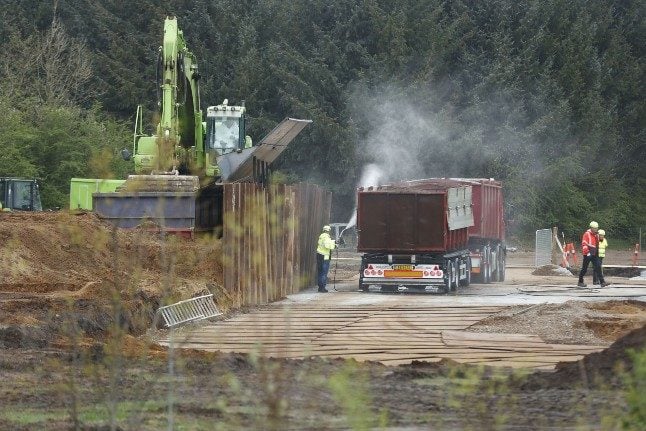The so-called “test exhumation” began at Nørre Felding, south of Holsterbro at 4am on Thursday morning. The carcasses will be incinerated at one of the 13 waste facilities that have submitted bids for the task, some at Amager, some at Sønderborg, and others to Hjørring in the north.
Citizens in the areas near the mink burial sites have been warned in advance that they may be exposed to bad smells when the decomposed carcasses are brought to the surface.
“I regret that this will cause some noise and some smell, but I think the residents would rather have this for a short period, and then know that the problem is solved and the risk of pollution eliminated, than have to live with the uncertainty for many years going forward,” said Rasmus Prehn, Denmark’s agriculture minister, in a statement.
READ ALSO:
- Denmark to spend billions on compensation deal for mink farmers
- Denmark to exhume minks culled over virus
- Denmark introduces year-long ban on mink farming after cull
But the broadcaster’s reporter Svend Vilhelm Mikkelsen said that the smell was minimal. “You can smell it clearly when the truck carrying the minks drives by, but it’s peanuts compared to standing in a pigsty,” he said.
The dig at Nørre Felding, a military area in northern Zealand, will be used to assess the condition of the minks after six months buried under soil and lime, before quickly moving on to the full-scale exhumation.
Prehn told Ritzau that Denmark had selected a public holiday, Ascension or Kristi Himmelfartsdag, to speed up the process.
“If we are to achieve this as soon as possible, before the weather becomes so warm that we risk further odor nuisances, then now is the time to strike. On a public holiday, everything else being equal, there is also less traffic on the roads, so you can reach the incineration plant more quickly.”
The plan is for all the animal carcasses to be dug up and incinerated by mid-July.



 Please whitelist us to continue reading.
Please whitelist us to continue reading.
Member comments